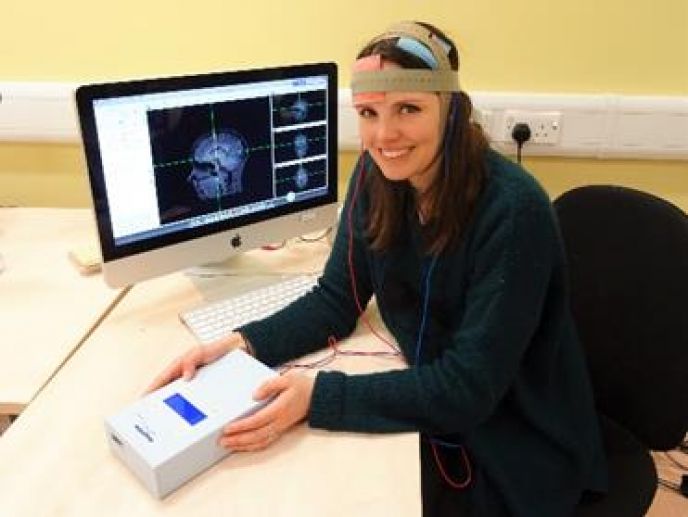
Changing Minds with Brain Stimulation
According to recent estimates, every year one in four people in the UK experiences a mental or brain health condition. Read more about how Researchers in Nottingham think that brain stimulation may be the way forward.
The human brain is complex and a marvel of evolution. Through its odd looking structure, thousands of electrical and chemical messages travel continuously across billions of pathways to generate thoughts, emotions and memories. It is your brain, and its extraordinary abilities, that make you unique. But this wonderful complexity comes at a price, as it is thought that many brain health conditions result from ‘unbalanced’ excitatory and inhibitory chemical messages in key brain networks.
According to recent estimates, every year one in four people in the UK experiences a mental or brain health condition. A common treatment for these conditions is to prescribe medications that alter brain chemistry. However, while these medications can be effective in reducing symptoms, and may work well for many people, their success rate is far from perfect. Not everyone responds to the medication prescribed, and many others will experience unpleasant side effects. So, wouldn’t it be great if there was a safe and effective alternative to medication? Something that could quickly restore the brain’s natural balance, without nasty side effects. Researchers in Nottingham think that brain stimulation may be the answer.
Non-invasive brain stimulation techniques have come a long way in recent years and are now commonplace within research facilities and universities. One method which has been increasingly linked to positive treatment outcomes is a technique called transcranial Direct Current Stimulation (tDCS). The technology behind tDCS is fairly simple, you place two electrodes on the head and run a low voltage current between them; some of this current is able to travel through the skull to the surface of the brain (the cortex). Unlike its better known cousin electro-convulsive therapy (ECT), tDCS uses only very low electrical currents and is not linked to any major side effects; in fact the most common side effect is simply a mildly annoying but tolerable itching sensation under the electrodes.
Evidence from a range of studies suggest that regular application of tDCS may reduce or eradicate symptoms in a range of neuropsychiatric conditions, including depression [1] and schizophrenia [2] and tDCS has recently been approved by NICE for the treatment of depression. These results are promising but there are still some important questions to be answered. In particular it seems that not all individuals respond in the same way to the stimulation, and that what increases cortical excitability for one person may not do so for another. It’s important therefore to understand why this so in order that treatments can be individualised, and people who would benefit from tDCS can be identified. This has been the focus of recent research led by Katherine Dyke as part of her PhD studies in Psychology.
Studies conducted under the supervision of Professor Stephen Jackson found that a particular type of tDCS was successfully able to increase cortical excitability in most individuals. The magnitude of this change differed largely from person to person, but when the same participants were tested multiple times the effects were found to be relatively stable. That is, those who showed a large increase in cortical excitability in the first session also showed a similar amount of change in three additional sessions. These studies were conducted in healthy young adults and stimulations were staggered so that the effects were temporary and reversible; however, they have important implications for the therapeutic use of tDCS in Tourette syndrome. The findings suggest that it may be possible to identify those who will benefit from tDCS using a single pre-testing session. They also suggest that the effects are not random, and imply that the effects are dependent on fixed factors such as anatomical features and maybe genetics.
The findings provide an exciting starting point for further investigation into factors which influence tDCS effects. These findings will be critical in furthering the stimulation technique as a useful treatment for so many.
1. Kalu, U.G., et al., Transcranial direct current stimulation in the treatment of major depression: a meta-analysis. Psychol Med, 2012. 42(9): p. 1791-800.
2. Brunelin, J., Mondino, M., Gassab, L., Haesebaert, F., Gaha, L., Suaud-Chagny, M. F., Saoud, M., Mechri, A., Poulet, E, Examining Transcranial Direct-Current Stimulation (tDCS) as a Treatment for Hallucinations in Schizophrenia. American Journal of Psychiatry, 2012. 169(7): p. 719-724.


